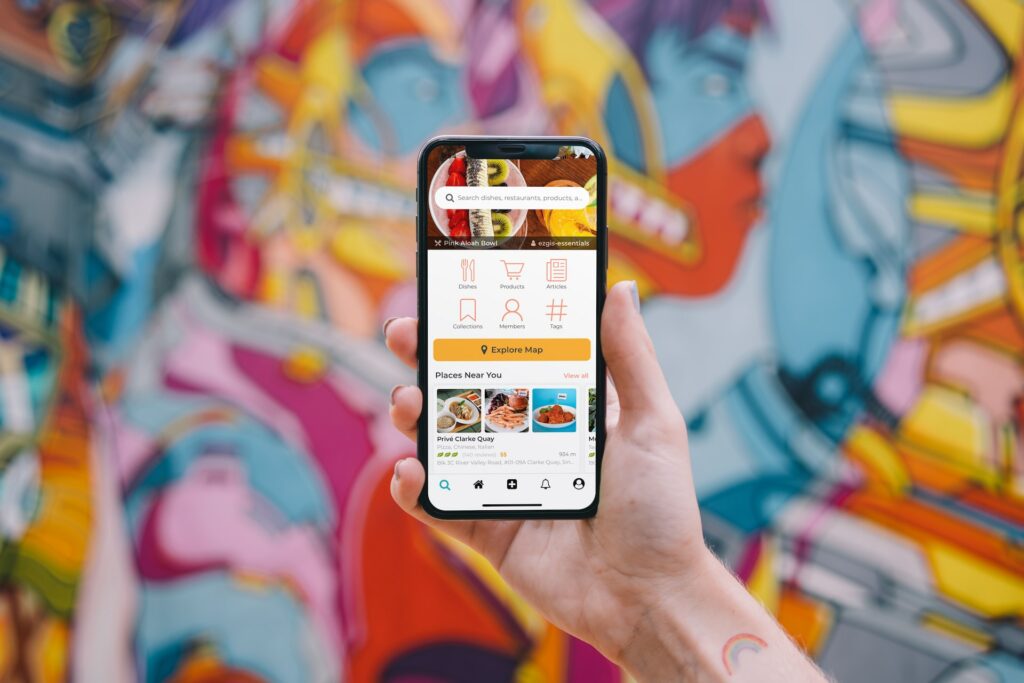Mobile eCommerce, also known as mCommerce, has become more popular recently since more people are using their phones to connect with others and shop online. This form of commerce allows customers to conveniently purchase products through their smartphones, offering greater accessibility and privacy.
Buying and selling products using mobile devices like smartphones and tablets is referred to as mCommerce. Unlike traditional eCommerce technology, which primarily focuses on desktop-based online shopping, mCommerce capitalizes on the mobility and convenience of mobile devices.
The Growth of Mobile eCommerce
The transition from researching to purchasing products becomes seamless with the increasing reliance on smartphones for research, browsing, and price comparisons.
Recent statistics highlight the growing significance of mCommerce, particularly in the Asia Pacific region and worldwide.
In the Philippines alone, experts project that there will be 90 million smartphone users by 2025 (source: Statistia), with nearly 8 in 10 Filipinos using smartphones. Mobile wallets have become the leading eCommerce payment method in countries like the Philippines, Vietnam, and Indonesia.
The simplicity of digital know-your-customer (KYC) processes has facilitated the widespread adoption of mobile wallets. In 2021, mobile devices accounted for most eCommerce sales in the Asia Pacific countries, amounting to approximately 87.2% of total mCommerce sales worldwide (source: Insider Intelligence).
The global mCommerce market offers tremendous opportunities for businesses. With approximately 4.62 billion active social media users in 2022 (source: Smart Insights), it has become essential for companies to establish a solid digital presence. Forecasts indicate that professionals expect mCommerce sales to reach $534.18 billion by 2024.
Additionally, many are gradually accepting emerging technologies such as cryptocurrency as a valid form of payment, with the market projected to be worth $2.2 billion by 2026 (source: Markets and Markets).
The COVID-19 pandemic also influenced consumer behavior, leading to several key trends in mobile eCommerce.
Mobile eCommerce Customer Behaviors
Mobile wallet usage in the Philippines has surged, driven by perceived risk, ease of use, rebates, and social influence. This trend appeals to both tech-savvy younger consumers and older individuals.
One-click ordering is also gaining traction to address consumers’ desire for convenience. One-click ordering streamlines the purchasing process by reducing the need to enter personal information repeatedly. Conversational commerce, facilitated by messaging apps, also enables seamless checkout experiences for social sellers.
With most shoppers browsing products on their smartphones before purchasing, optimizing mobile shopping experiences is vital. Websites must be mobile-friendly and provide a seamless user interface to cater to modern consumers’ preferences.
Another trend is voice assistants integrated into mobile devices and smart speakers. The convenience of voice commands for online purchases has resulted in approximately 60% of shoppers using voice assistants for shopping purposes (source: Statistia).
Additionally, more businesses are adapting augmented reality (AR) and virtual reality (VR) to enhance their customer experiences; customers can visit their stores or interact with products digitally through these.
These technologies have great potential to enhance the customer experience, and different companies already utilize them in various industries.
How You Can Adapt to Mobile eCommerce Trends
You can implement several strategies to capitalize on the growing mobile eCommerce trends. One is ensuring you optimize your website and mobile app for a seamless shopping experience.
Pages should load quickly, have intuitive navigation, and provide a responsive design that adapts to different screen sizes. Invest in user experience (UX) testing and leverage analytics to improve performance continuously.
You can also implement innovative personalization techniques to deliver tailored product recommendations based on customer behavior and preferences. Use machine learning algorithms to study customer data and provide personalized offers, product suggestions, and targeted marketing campaigns.
Try also to simplify the checkout process to reduce friction and cart abandonment. Allow guest checkout, offer multiple payment options, and provide a one-click purchasing option. Implement a secure, user-friendly payment gateway to instill trust and enhance the shopping experience.
Integrate popular mobile payment methods like wallets and digital payment platforms into your eCommerce platform. Catering to the preferences of mobile-savvy customers will increase convenience and encourage more purchases.
Leverage social media platforms to promote your products and drive sales. Form a strong presence on platforms like Facebook, Instagram, and TikTok. Use social commerce features to showcase and sell your products directly to your followers.
And finally, utilize data analytics to gain insights into customer behavior, preferences, and trends. Use these insights to make knowledgeable decisions, optimize marketing strategies, and improve customer experience.
By embracing the opportunities provided by mobile devices, you can tap into a vast and growing market of mobile shoppers and stay ahead of the competition. Learn about more mobile eCommerce statistics and strategies in the handy infographic below!

You may also like
-
Classified Websites in India: A Digital Marketplace for All
-
Why Sod Installation is the Quickest Way to a Beautiful Lawn?
-
The Role of Statutes and Case Law in Policy Limit Access
-
Setting Up a Home Theater with LG CineBeam Q The Ultimate Guide
-
Business Listing Sites in USA: 2025 Guide for Better Online Visibility

